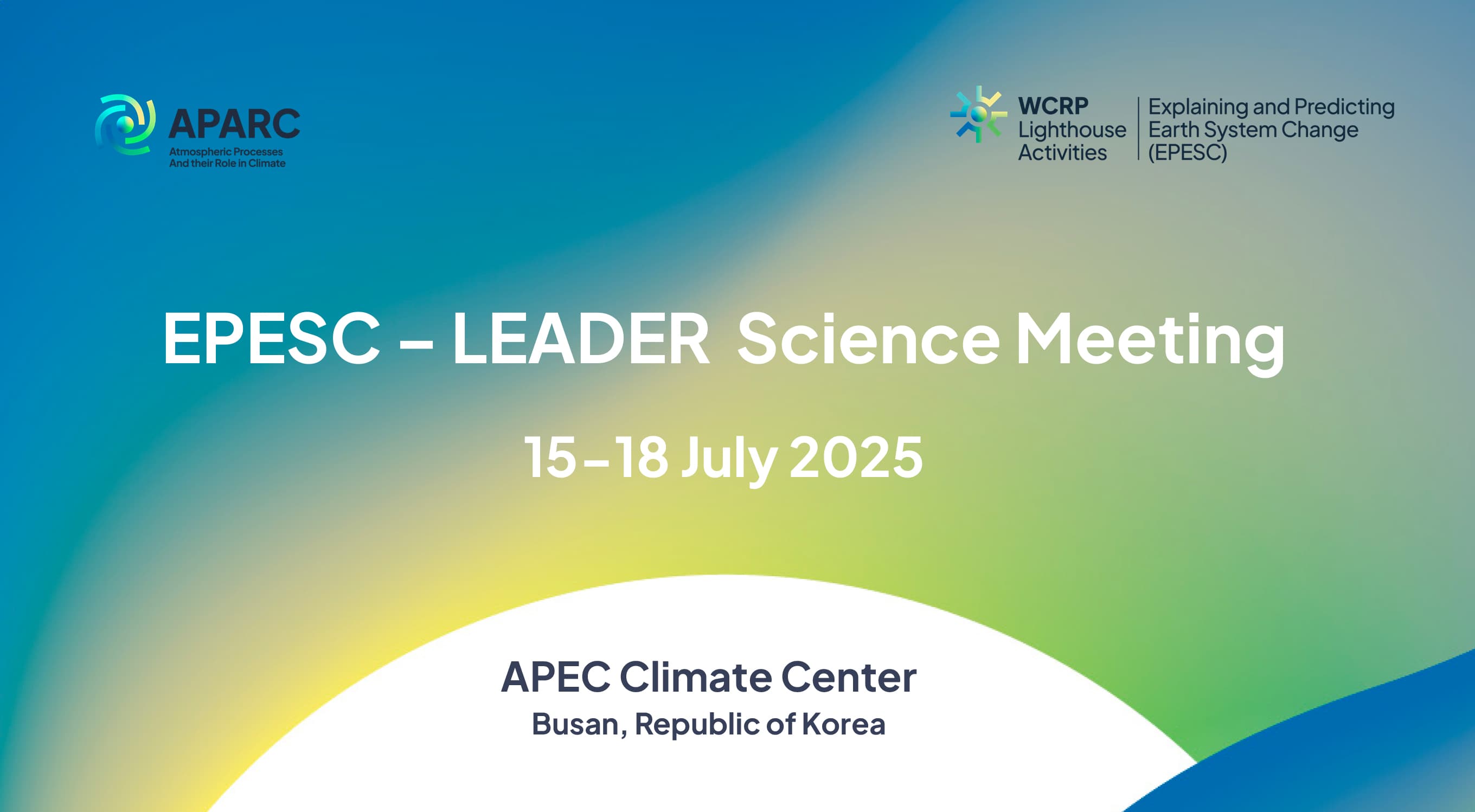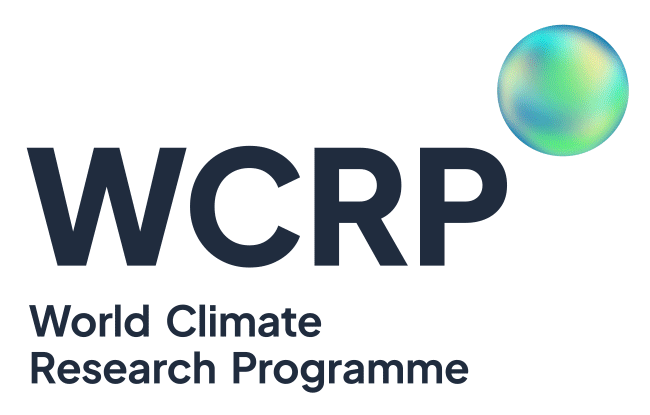
Presentations
Tuesday 15 July
- Erich Fischer - Introduction
Click on the titles below to view the presentations for each session.
- Erich Fischer: Introduction from the session chair - What are models good at, and where are they deficient?
- Tiffany Shaw: Confronting Earth system model trends with observations
- Kirsten Findell: What do models get right about changes in evapotranspiration? Attribution of mechanisms of ET change
- Yang Chen: Undetected observation errors as a major cause of the long standing observation-model discrepancy on relative humidity trends
- Andrea Steiner: Tropospheric and stratospheric temperature trends from observations
- Lijing Cheng: A large-ensemble observational ocean temperature/heat content product and the application
- Chaim Garfinkel: Introduction from the session chair - Predictions and predictability of large-scale modes
- June-Yi Lee: Estimating predictability of tropical trans-basin climate variability using the CESM2-based multi-year prediction system
- Doug Smith: The need to account for model error in attribution and prediction
- Jeong-Eun Yun: Exploring ocean-driven multi-year predictability of terrestrial ecosystem components
- Leonard Borchert: PDO-facilitated seasonal predictions of growing season heat in the central USA
- Dim Coumou: AI in climate science: mining knowledge and boosting predictability
- Rashed Mahmood: Multi-decadal initialized climate predictions using the EC-Earth3 global climate model
- Markus Donat: Towards understanding the sources of forecast signals and skill in interannual to decadal climate predictions
- Stephanie Fiedler: On CMIP climate forcings TT efforts for prediction and attribution
Wednesday 16 July
- Andrea Dittus: Introduction from the session chair - Update on tropical circulation activity and LESFMIP sprint
- Jonathon Wright: The South Pacific Convergence Zone: Reanalysis and LESFMIP Perspectives
- Suyeon Moon: Climate change-driven evolution of East Asian summer monsoon frontal precipitation
- Seok-Woo Son: Accelerated Hadley circulation weakening by aerosol mitigation
- Chaim Garfinkel: Forced changes in the QBO in the LESFMIP simulations
- Jonathon Wright: Leader monsoons
- Melissa Seabrook: Multidecadal Pacific Atmospheric Circulation Trends and their Drivers
- Rei Chemke: Historical Hadley circulation strength changes: resolving the model-reanalysis discrepancy
- Indrani Roy: Influence of the sun and volcanoes on atmosphere-ocean coupling
- Shubham Waje: Understanding the impact of the Quasi-Biennial Oscillation on the subseasonal variability of the Indian monsoon
- Annalisa Cherchi: Global and regional monsoons in a changing climate
- Scott Osprey: Introduction from the session chair
- Basudev Swain (presented by Scott Osprey): Lessons from historical volcanic eruptions for projecting the Tonga event’s impact on polar warming
- Davide Zanchettin: Volcanically-forced climate variability in the historical period: perspectives from LESFMIP (community paper)
- Wenjuan Huo: A retrospective study of climate response to solar variability with outputs of LESFMIP (community paper)
- June-Yi Lee: Introduction from the session chair - Summer northern hemisphere atmospheric circulation trends
- Alexia Karwat: Exploring multi-year predictability of terrestrial heatwaves in Global Hotspot Regions
- Tiffany Shaw: Anthropogenic aerosols have significantly weakened the regional summertime circulation in the Northern Hemisphere during the satellite era
- Tilda Huntingford: External forcing of European summer heatwaves and circulation
- Gerard Marcet-Carbonell: On the Northern Hemisphere summer circulation: Disentangling the contributions of different forcings through LESFMIP experiments
- Jitendra Singh: Quantifying the role of externally forced atmospheric circulation change in heat extremes from nudged circulation
Thursday 17 July
- Doug Smith: Introduction from the session chair - Ozone vs GHGs
- Leandro B. Díaz: Response of the Southern Hemisphere atmospheric and oceanic circulation to single forcings (community paper)
- William Dow: The role of external forcing in Antarctic peninsula temperature extremes in austral summer and the links with large-scale atmospheric circulation patterns
- Kewei Lyu: Roles of external forcings and tropical teleconnections in the Southern Ocean warming
- Bianca Mezzina: Exploring the contributions of single atmospheric forcings on Antarctic sea ice trends using large ensembles
- Sabine Bischof: Contributions of various climate forcings to historical Southern Hemisphere stratospheric vortex strength and lifetime
- Ghyslaine Boschat: Role of external forcing on the Southern Annular Mode and its impact of Southern Hemisphere climate
- Leandro B. Díaz: Introduction from the session chair - North Atlantic atmosphere and ocean circulation
- Chaim Garfinkel: The response of the North Atlantic atmospheric and oceanic circulation to external forcings: understanding intermodel spread (community paper)
- Shoshiro Minobe: Spatiotemporal structures of forced response revealed by a novel analysis approach designed for LESFMIP
- Ales Kuchar: Understanding historical changes in the Northern Hemisphere stratospheric polar vortex: insights from the Large Ensemble Single Forcing Model Intercomparison Project
- David Avisar: Revisiting the historical Drying of the Mediterranean in the LESFMIP Simulations
- Rachel Wu: Stratosphere-troposphere coupling in LESFMIP (community paper)
- Sara Bennie: Do externally forced atmospheric trends resemble modes of internal variability?
- Rei Chemke: Targeted large-ensemble simulations for elucidating model-reanalysis discrepancies in storm track trends
- James Risbey: Introduction from the session chair - Impact of circulation changes on extreme events
- Zhuo Wang: At the weather-climate interface: interactions between large scale circulation and extremes
- Hamish Ramsay: Poleward migration of the most damaging tropical cyclones
- Marlene Kretschmer: Using machine learning to infer teleconnections of extreme weather events
Friday 18 July
- Andrea Steiner: Introduction from the session chair - The role of external forcings and internal variability on atmospheric temperature trends
- Benjamin Santer: On Human fingerprints of climate change (atmospheric temperature, models and observations)
- Matthias Stocker: Evaluating atmospheric temperature trends from LESFMIP simulations and observations
- Sebastian Sippel: Early-twentieth-century cold bias in ocean surface temperature observations & implications for constraints on future temperature projections
- Erich Fischer: On how the continued upward trend in temperature impacts hazard likelihoods (the increased likelihood of 5-sigma events)
- Satyajit Singh Saini: Aerosol transport and Polar Climate Extremes: Heatwave amplification, Snow-albedo feedback, and Cryosphere vulnerability
- Zhuo Wang: Introduction from the session chair - Extreme event attribution
- Yukiko Imada: Event attribution methods and approaches
- Wenxia Zhang: Anthropogenic amplification of precipitation variability over the past century
- James Risbey: The role of model bias in model assessment of extreme events
- Nick Leach: Forecast based weather and impact attribution
- Seung-Ki Min: Global warming-induced warmer surface water over the East China Sea can intensify super typhoons like Hinnamnor
- Yang Chen: Human-caused increases in humidity-related compound extremes constrained by homogenized observations
- Christian Franzke: The first emergence of unprecedented compound extremes in the Anthropocene
- Anca Brookshaw: On the different needs of research vs operational activities from the seasonal perspective; added challenges posed by the decadal time scales
- OkYeon Kim: Advancing Annual-to-Decadal prediction of Extreme Climate Events in the Asia-Pacific Region
- Doug Smith: On the operational Annual-to-Decadal updates
- Erich Fischer: The Future of EPESC and LEADER: where are we going? Framing the long-term vision of EPESC: Where will the science of annual to decadal attribution and prediction be in 2050?
- Gopinadh Konda: Atmospheric Rivers as Key Drivers of Global Extreme Precipitation: The observed analysis from 1979 to 2024
- Yunju Park – Soil Moisture - Precipitation Feedback over East Asia using IGRA2 Observation Data
- Daeun Kwon: Attribution of heavy precipitation event using pseudo global warming simulations: sensitivity to vertical temperature changes
- Bianca Mezzina: ENSO teleconnections in eddy-rich climate models: Insights from the EERIE project
- Mincheol Moon: Tropical cyclone response to ambitious decarbonization scenarios
- Amitava Roy: Volcanoes causing regional weather extremes
- Leandro B. Díaz: Southern Hemisphere surface climate response to human activities analyzed using LESFMIP simulations
- Wuhan Ning: The tropospheric response to the zonal asymmetric momentum torques: implications for the downward response to wave reflection and SSW events

